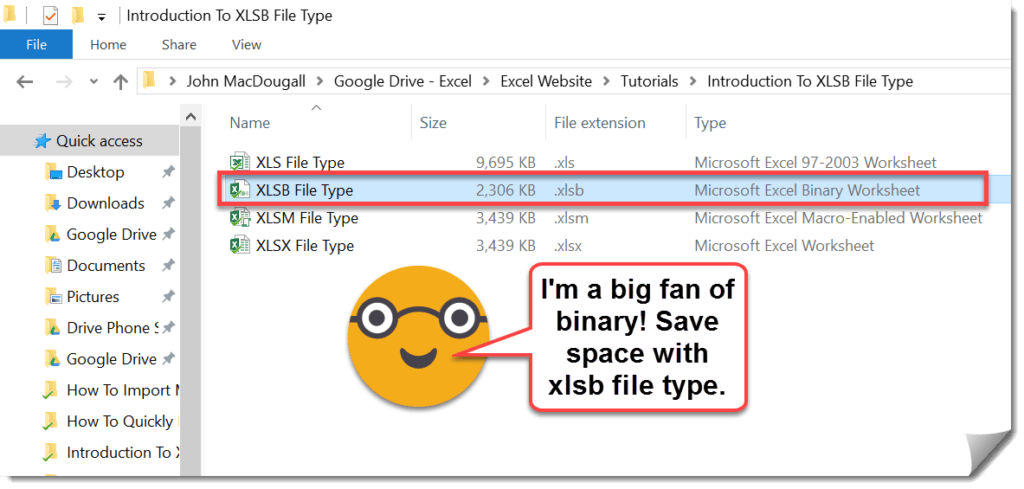What’s so great about these files?
Smaller File Sizes – I usually see about 30% reduction in file size when compared to xlsx or xlsm type files.Supports VBA/Macros – similar to xlsm and xls files the xlsb type is also VBA/macro enabled.Open and Save Quicker – computers speak binary, so it makes sense that they will be able to read and write these much quicker since it’s already in their language and they don’t need to translate it first. This results in files opening and saving up to 2x faster. Calculations don’t actually run quicker in xlsb, just opening a saving.Support Long Formulas – formula above 8192 characters won’t save properly in other Excel file types, however they will in xlsb type Excel files.
What’s not so great about these files?
Security – Like xlsm type files, they are VBA/macro enabled, so there is a potential security risk with malicious VBA procedures that will run when the workbook is opened.Compatibility – They are not compatible with Excel 2003 or previous versions.
How to create an xlsb file?
Save a file as xlsb by using Save As. Your workbook is now an xlsb type file.
